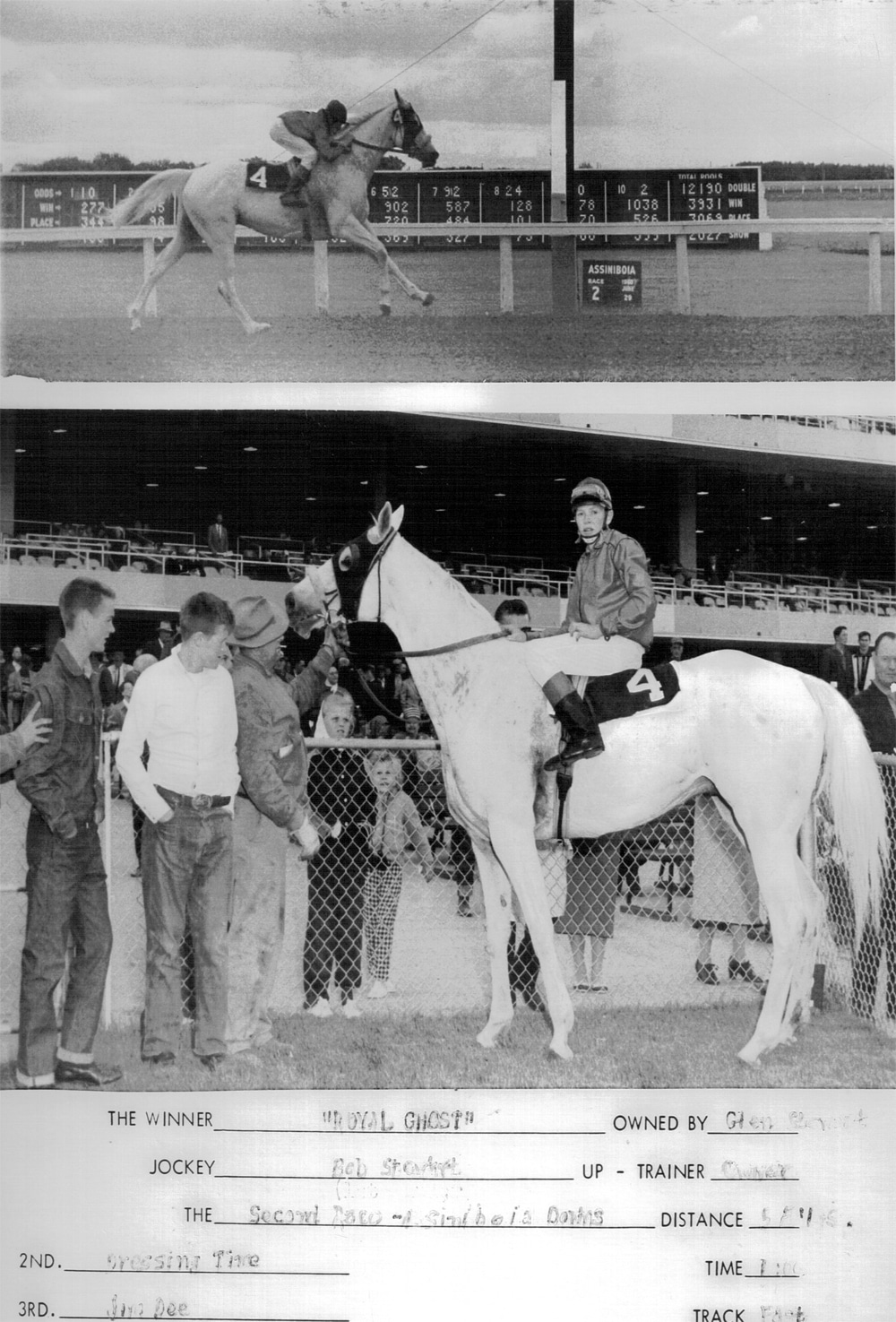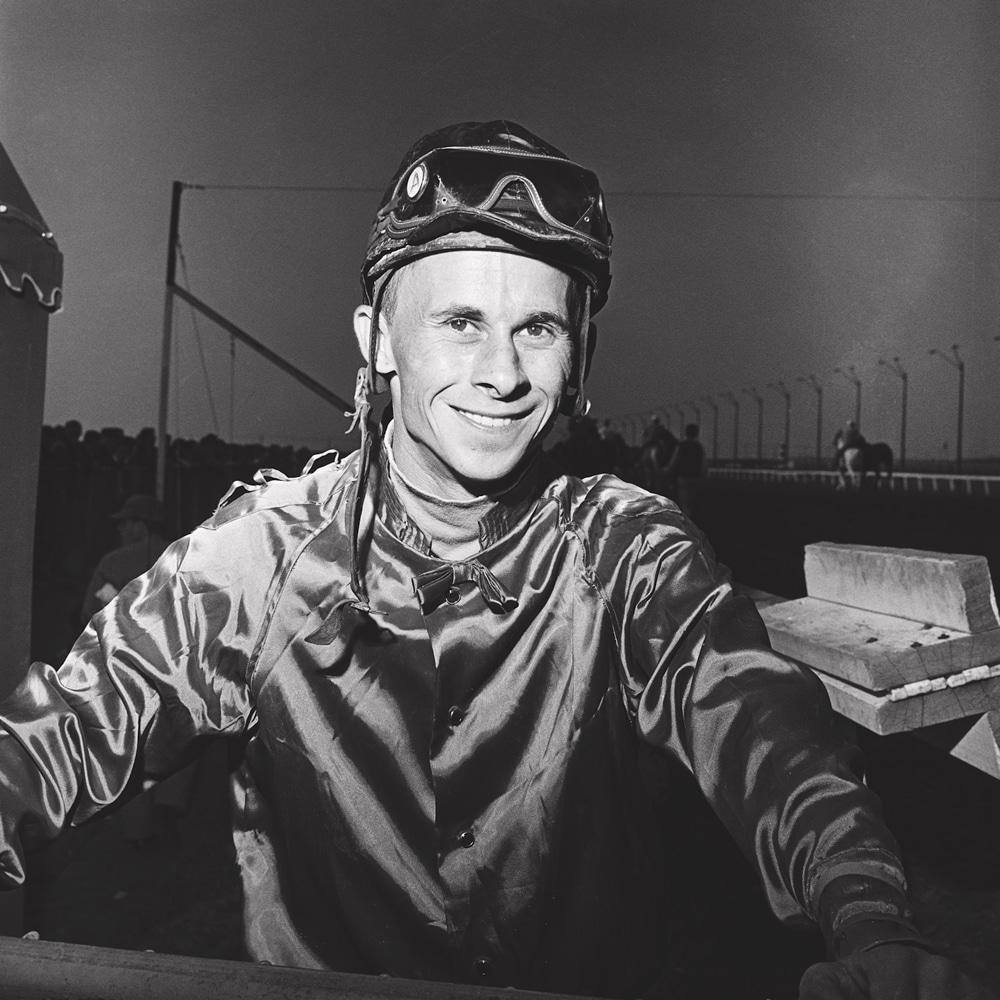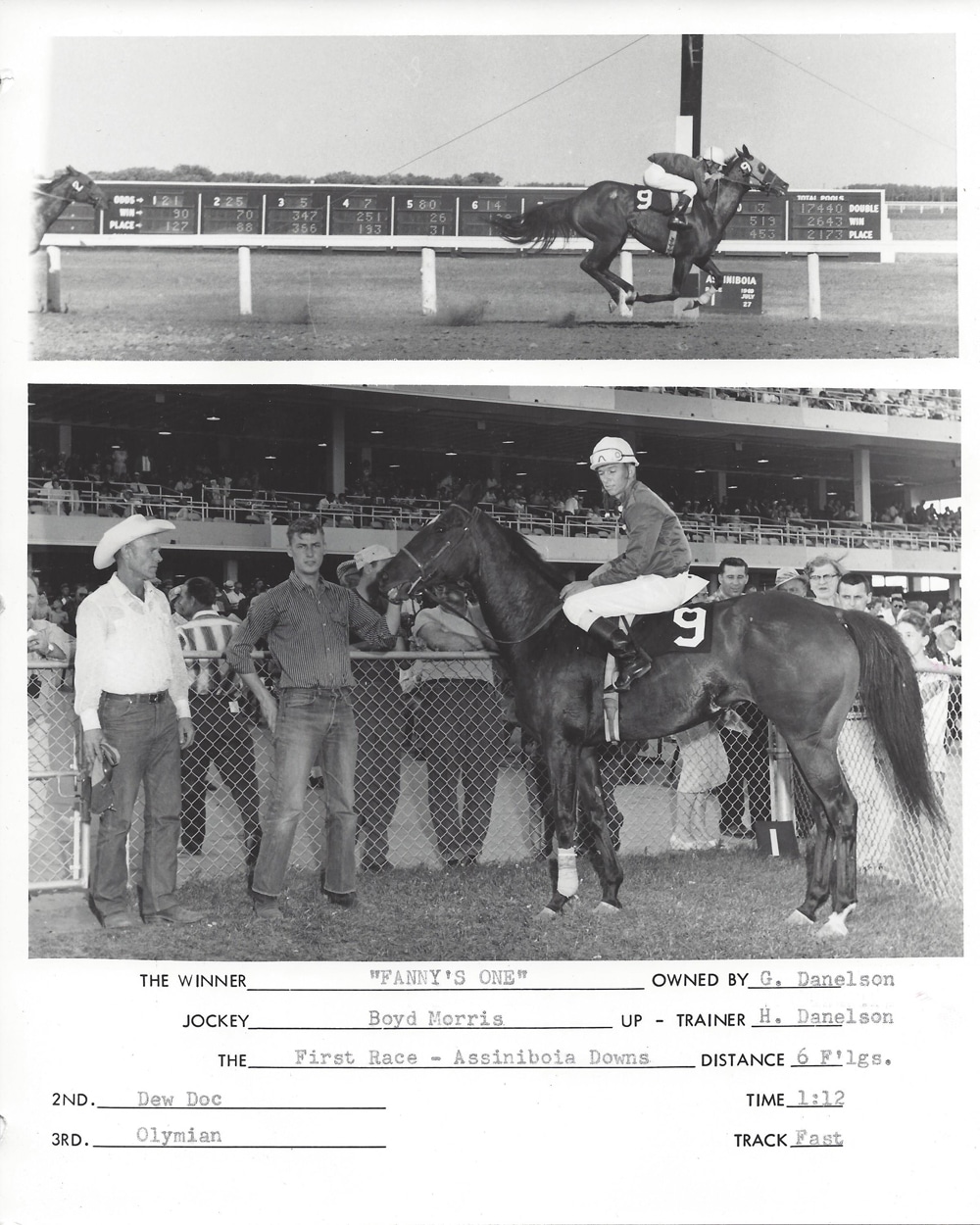
Royal Ghost. Three wins as a 10-year-old at the Downs in 1960. Double-digit payoffs every time. Bobby Stewart up.
by Bob Gates
“Cull – to remove an inferior animal from a herd.”
The definition sounds sad, doesn’t it? However, following Assiniboia Downs’ 1962 race meet that is exactly what took place at the 6 ½-furlong oval on the edge of Winnipeg’s Perimeter Highway.
The goal of the four-year-old track was to adhere to a policy of “Better Purses for Better Horses.” Fact is, some of the horse population at the Downs had not given a good accounting of themselves and were having to face the consequences for some lackluster performances.
A total of 54 thoroughbreds found themselves on the receiving end of “pink slips” that denied the offenders stall space for the 1963 meet. Generally, their crimes fell into one, or sadly more, of the following:
– Maidens, five-years-old and older with unsatisfactory past performances
– Horses ten-years-old or older that did not win in 1962
– Horses whose past performances were unsatisfactory and who did not finish first, second or third in their past eight starts.
A quick scan of the four-legged athletes on the “naughty” list did not reveal a lot of familiar names, but this was almost 60 years ago. Age was against a good portion of this crew, as 20 of the 54 would be 10 years of age or older in 1963. Topping that list were two 14-year-olds and three 13-year-olds.
Truth be told, the list of “tired” ones contained the names of some back-in-the-day favourites and others who at one time or another figured in some record payoffs. It is their stories that deserve to be told. So let’s pay our respects to the horses that time forgot.
In 1962 Prairie Chief and Blue Sir were geldings that could no longer cut it. The “Chief” was soon to be 12 and Blue Sir was turning 14. Back in August 1959 the pair came together for the 8th race quinella that paid a record $417.40. Chief went postward at 16-1 while Blue Sir was 25-1. There were 40 winning 6-10 quinella tickets that shared the $21,004 pool.

Dickie Armstrong, rider of 11-year-old Mr. Mullen when he paid $46.30 to win in 1961, setting up a $492.10 daily double.
Then there was Mr. Mullen. In 1962 the gelding had reached the ripe old age of 13 and with another birthday around the corner his race record came under scrutiny. “Mullen” had seen better days, especially one in August 1961. The then 11-year-old with Dickie Armstrong up won the first leg of the daily double, paying $46.30 to win and helped set up a handsome double payoff of $492.10 when Wind Shadows won the second race. Oddly enough both longshots wore the #7 saddle cloth.
Who knew? Wind Shadows was trained by Murray Duncan’s old partner, the late Garylle Stewart, who had brother Bobby in the irons.
Shadow Roll was going on 11 in November 1962 and this mare’s story is rather sombre. In her day “Shadow” was a nice horse who as an 8-year-old had won the prestigious Downs’ Gold Cup. The chestnut had fallen on tough times however, and the ability just wasn’t there any longer. Sad to see this fate for a Gold Cup winner, she deserved better.
Royal Ghost was a good-looking roan gelding who would be 13 in less than two months and 1962 was not kind to the Glen Stewart runner. After all, this was the same horse that carried Glen’s son Bobby to his maiden win on the track in 1960. In fact, that same year, the “Ghost” at 10-years of age hit the winner’s circle three times with future six-time Downs leading jockey Bobby Stewart in the saddle.
Talk about no respect, the 1960 wins were all nice win tickets. On June 29, a $2 wager on the Ghost paid $22.50, on August 2, $33.80 and on August 13, $37.60. Are you kidding me? Can you imagine any horse these days winning three races in a single season and paying that much? And having the son of the owner aboard for the ride? Really?
The last stall orphan we will look at belonged to the Downs’ all-time leading trainer, Gary Danelson. Fanny’s One was to celebrate her 11th birthday on January 1, 1963, and her 1962 season was one she and Gary would rather forget.
The pink-slipped mare made headlines in July 1960 when she was part of a record daily double. The 9-7 combo of Fanny’s One and Suezac, a Bob Chipman horse that had no tail, paid a bomb’s away $2,006.00. Fanny paid $101.30, $54.50, $44.80 across the board. The $44.80 show price was also a record, one that would stand until June 1986 when longshot Canadian Border paid $66.50 to show.

How about a final thought on Gary? Over the years he filled a lot of stalls at the Downs. Assiniboia Downs has operated in eight different decades and while Gary did not race here in 1958, he did get his first win at the Downs in 1959. All told, he owned and/or trained horses here in every decade that followed.
Even the global pandemic can’t keep the man from Scobey, Montana down. Gary hasn’t been able to cross the border for the last two years because of government health restrictions, but he had three horses running at the Downs in 2020 and this year he has four. His eight-decade relationship with Assiniboia Downs remains intact. Who else can make that boast?
Today we remember the thoroughbreds who were told they were not wanted anymore. In most cases, Father Time just came calling, as he will for all of us. The evictees may have been tired, weak, old, or sore, but many were favourites of the Downs’ punters, and these charges all called the Downs home in the early years.
And although they all became part of the Great “Cull” of 62, we’d much rather remember these horses in their glory days — for that special winning effort or two — when they lit up the tote board with boxcar payoffs.
And smiles to match.

Trainer Murray Duncan with the late Garylle B. Stewart, trainer of Wind Shadows.
